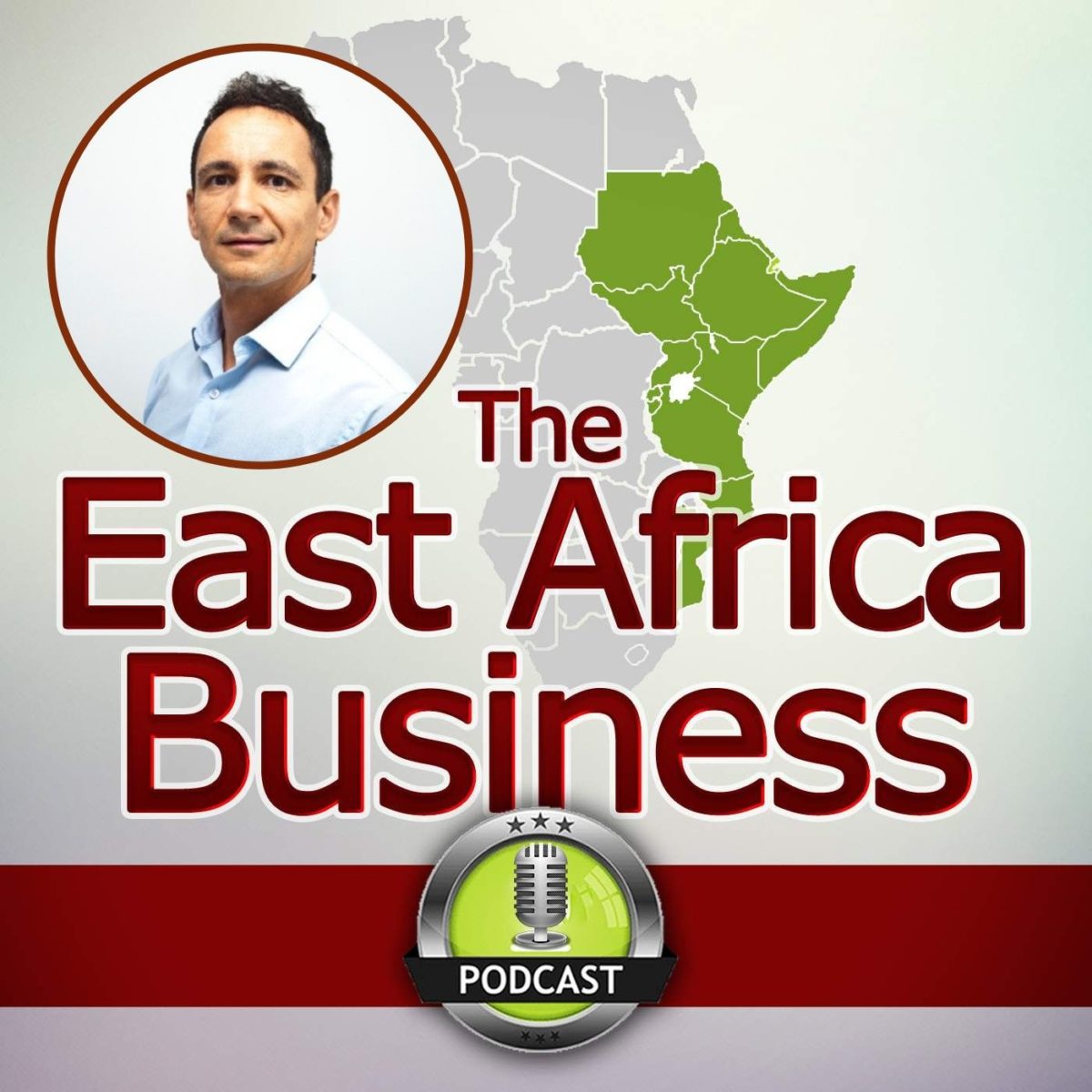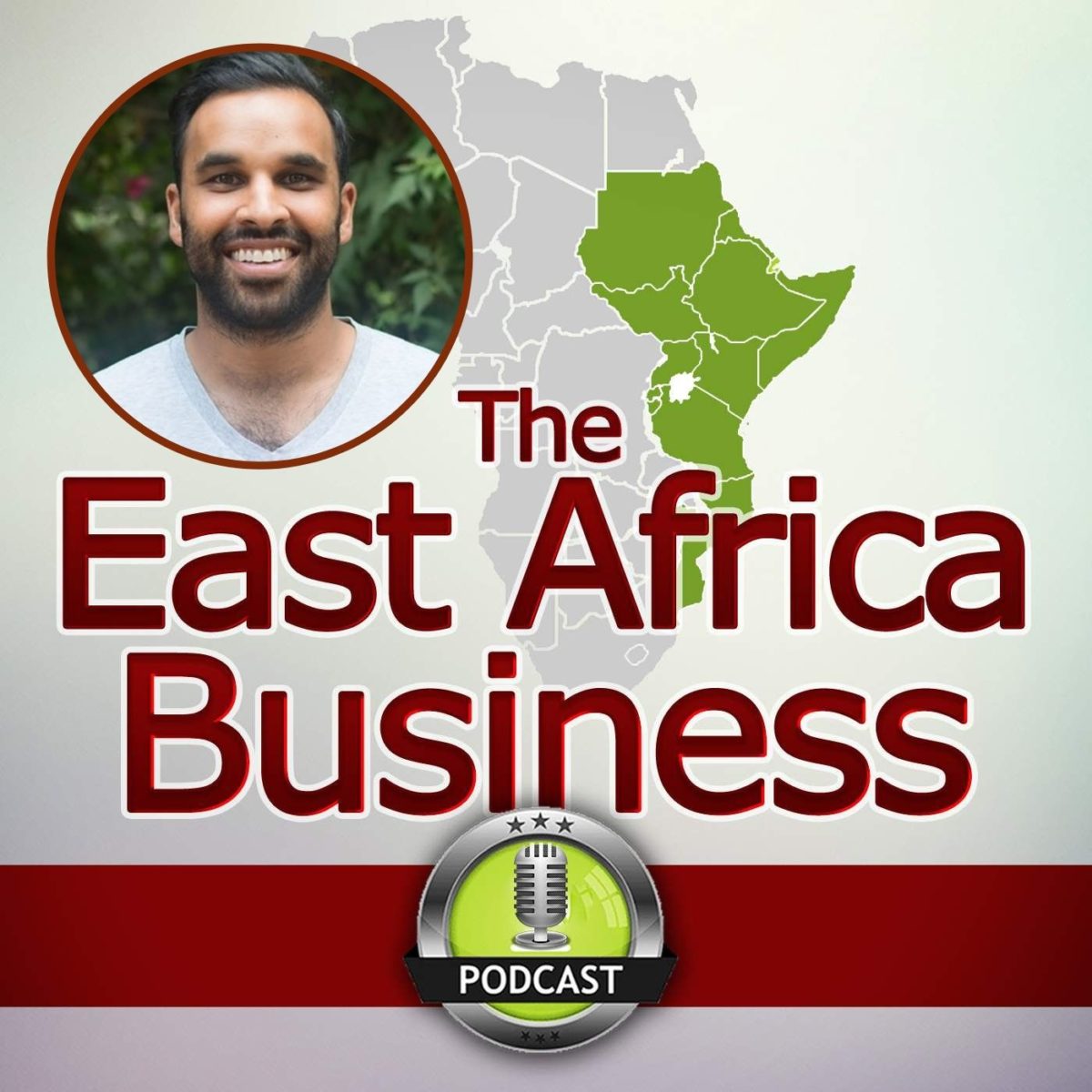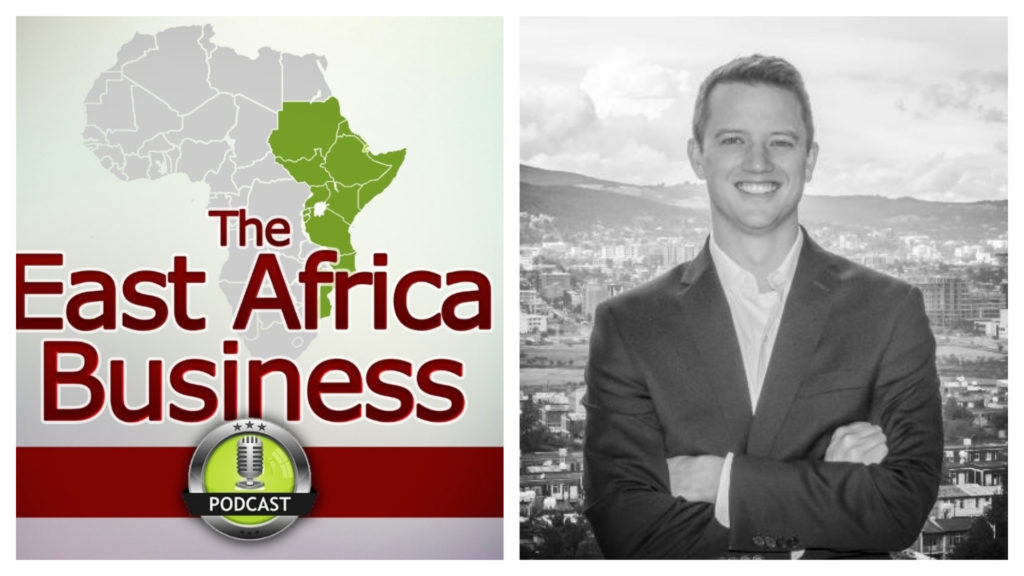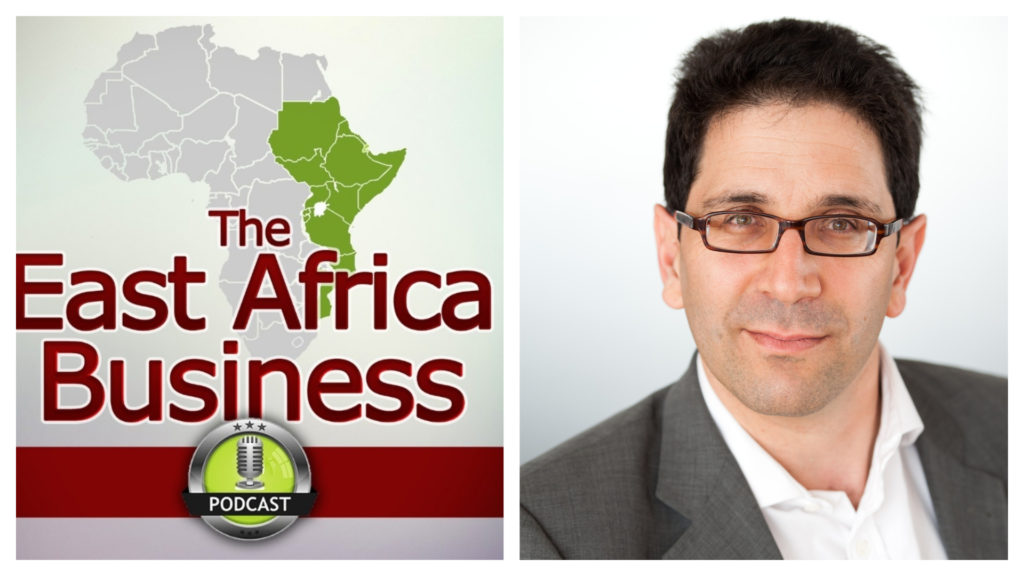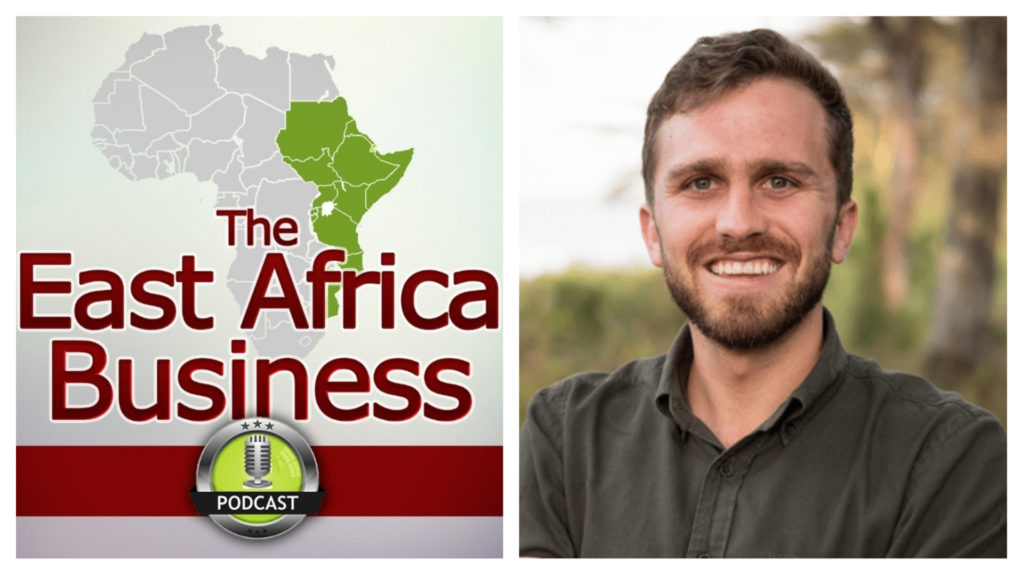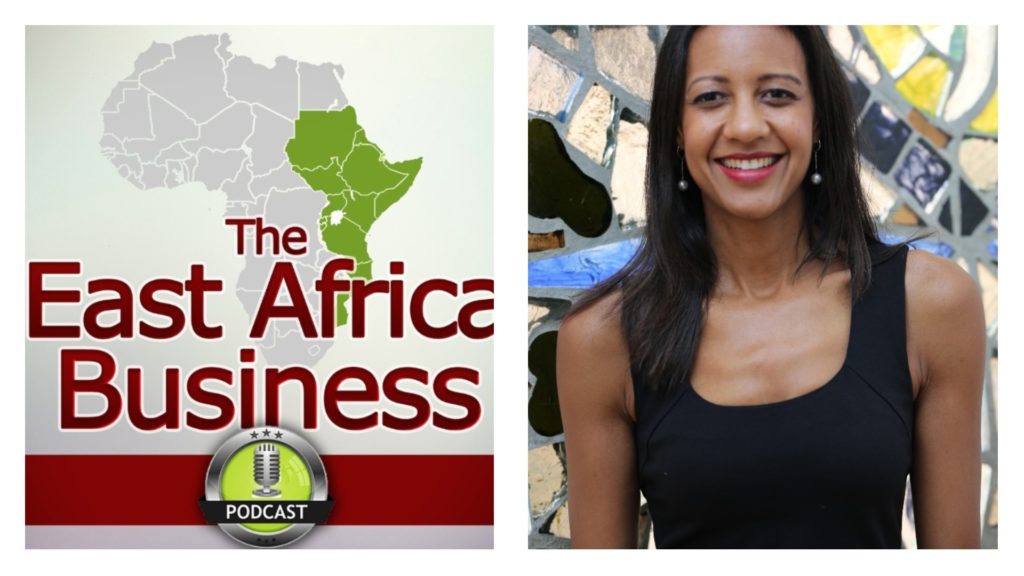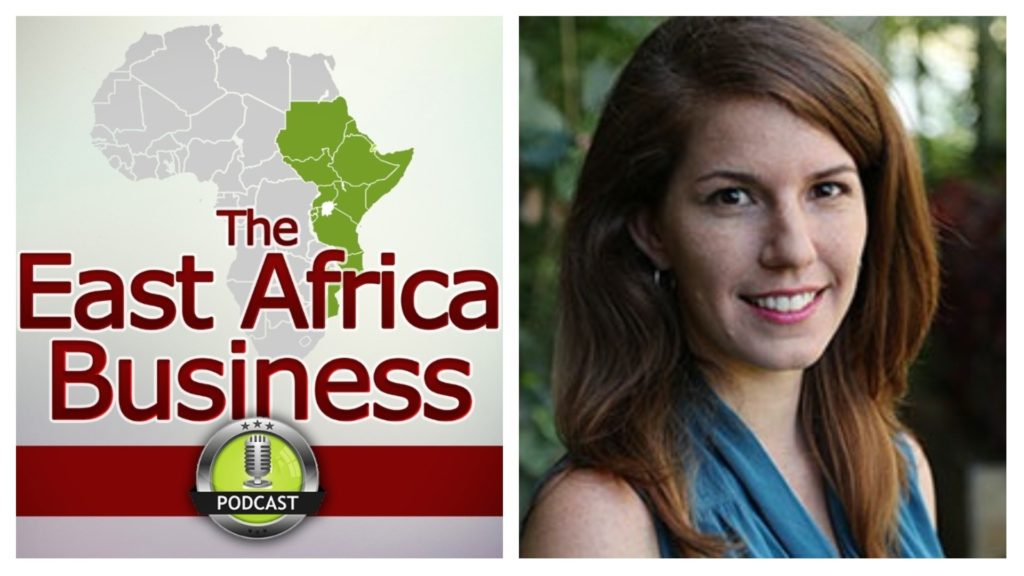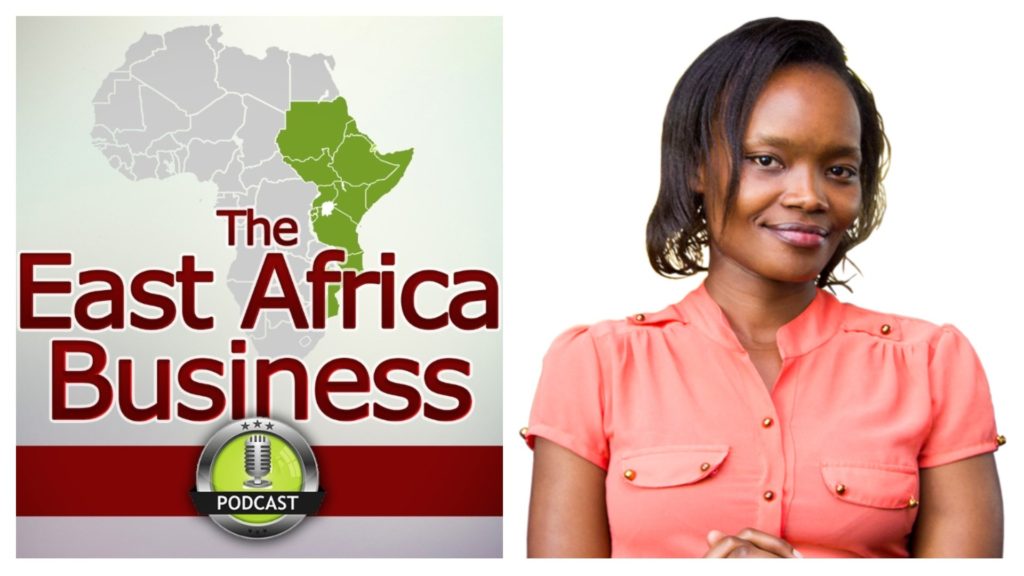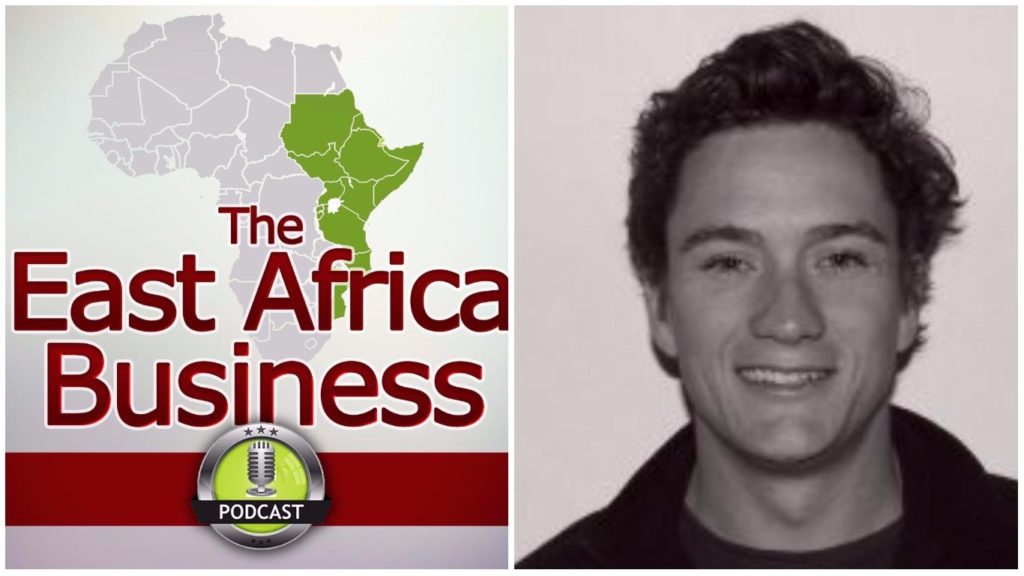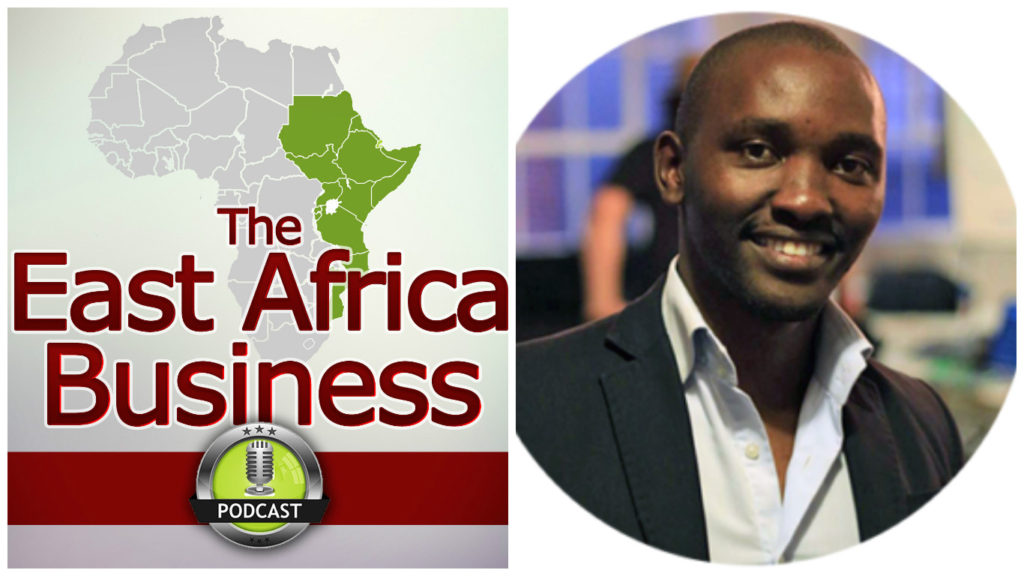Overview
This week we’re featuring what has to be one of my favourite business models to date.
One of the dominant themes in East Africa is that individuals and businesses don’t have the cash to afford products and services that would earn them more money, and make their lives better.
To open up access to electricity, off-grid solar power systems are now commonplace, provided on a Pay As You Go basis.
This model is being adopted in other markets too, such as cooking fuel, irrigation pumps and TVs.
Where it becomes especially powerful is, in my opinion, if the financing can be for a revenue-generating asset.
The new owner gets a top of the range piece of kit and is able to pay for it through the additional income they earn from it.
This is what Ilara Health has done for medical diagnostics.
Ilara Health takes the most advanced, modern equipment (often smartphone-based) that offer the same results and cost only a few thousand dollars, and then provide them to peri-urban medical clinics in Kenya who then pay back in installments.
The result – routine ultrasound tests become available to a local population at an affordable rate, (rather than spending hours to travel to have one), medical clinics can grow their business, and Ilara Health has a sustainable business model.
Emilian also has a number of top tips on starting any business in Africa which come from over 20 years of him running and investing in companies on the continent.
I’d strongly recommend following him if you’re interested in building ventures in the region.
Sign up below to hear whenever there are new stories and episodes released on the podcast
Social Media Links
Website: https://www.ilarahealth.com/
Facebook: https://www.facebook.com/IlaraHealthLtd
Twitter: @HealthIlara
LinkedIn: https://www.linkedin.com/company/ilarahealth/
Transcript
Sam: 00:07 Cool. So we’re here today with Emilian from Ilara health, Emilian welcome to the show.
Emilian: 03:44 Thank you.
Sam: 03:45 So to get started, can you tell us a bit about you and a bit about Ilara health?
Emilian: 03:48 Sure. So I’m Emilian, I’m the CEO and co founder of Ilara health. And we make diagnostics more affordable, accessible and accurate in Africa. I’m an entrepreneur, but also an investor. I spent the past four years building and, and growing growth stage technology enabled venture capital firm focused on Africa, mainly in between South Africa, Kenya, Nigeria and Egypt. Prior to that I used to run rocket internet, the parent company with Jumia in a couple of markets, between China Russia, India, South Africa, and later in Nigeria built one venture with not for us funding in South Africa and run Groupon, South Africa for a year.
Sam: 04:46 Got it. Cool. And when did you start Ilara health?
Emilian: 04:50 So we started, Ilara health is a result of over a year, actually year and a half of market research around how to build a sustainable healthcare venture in Africa and emerging markets. We’ve launched commercially in March this year. Well, I spent half of my time last year researching the primary healthcare sector in multiple markets in Africa as well as India and Latin America to find the right business model to build here.
Sam: 05:28 Got it. And if I’m right, you’ve settled on lease financing for a diagnostic test, is that…
Emilian: 05:37 Yeah, so, I mean, starting with a problem so 70% of of medical decisions require diagnostics such as blood tests and, but there are half a billion you know, 500 million people in Africa, who struggled to access or afford a simple blood test. So I’ve, you know, as I mentioned to you over over a year, I visited hundreds and hundreds of health clinics across the continent and it’s shockingly poor. So I remember even meeting this lady in one of the clinics, and she actually lost her child from pregnancy complications because she just couldn’t afford an ultrasound before birth. But, but thanks to advances in artificial intelligence, robotics, technology there are companies around the world which create new diagnostic devices, which are much smaller, lower cost and can work directly at the point of care in the doctor’s office providing results in minutes. So at Ilara health we do four things, to get back to your question, so we partnered with those companies and we integrate their devices into our technology platform. Number two, we distribute this bundle of devices into the petty urban and rural clinics where 70% of the patients live. So we’re not in Nairobi itself, but we’re outside the main city in the suburbs. We also offer financing, which is very important because those doctors cannot afford to buy even a much cheaper and smaller diagnostic device upfront. Number three, we charge the doctors an affordable subscription or, or paper test as they use the equipment and we continue helping those doctors growing their revenue by providing new diagnostics devices and new services.
Sam: 07:35 Got it. Okay so you sort of said you were always interested in health care is that it seems like if you went and did it, spent a year going through lots of clinics. That was your kind of…
Emilian: 07:45 Exactly. So I’m, I’m super proud, actually, I’m very passionate about health care for myself and it’s been a while. I’m very into prevention and early detection of diseases. I go every six months to see a doctor in Cape town and I do 20, 30 blood tests, you know, to just to…
Sam: 08:06 What’s a 20, 30 blood tests.
Emilian: 08:08 So anywhere between the, you know, starting with the basic ones, between all the biochemistry the lipid function, no cholesterol up to more complex tests tumor markers hormones, just to make sure that, you know, if anything goes wrong, I can detect it and I can do something about it. And these communities with you know, with a reasonably healthy lifestyle, you know, doing lots of sports, eating very healthy, sleeping, you know seven, eight hours a night. So that’s my goal. My goal is to make sure that I can, you know, I can live healthy and you know, hopefully longer. So longevity is one of the things I’m looking into. However, in Africa we’re actually not talking about longevity, we’re talking about survival in those regions. So I’ve been looking for a while how to apply my interest in healthcare into a business, a sustainable business model, tackling the basic needs that a patient, you know, sub in, you know, in suburban area in around the main cities in Africa would need and people, you know, during those hundreds clinics, we, you know, one of the first questions that we ask doctors is why, what are the main reasons someone comes to see you? And there are four, five reasons people come with upper or lower respiratory infections and ideally they would need a full hemogram to make sure to, to identify if those infections are viral or bacterial. So to see if they they take antibiotics or not then there are just the infections they will need a stool test. Then urinary tract infections they need a urine test. Then a high percentage of people here are pre-diabetes, pre-diabetes or diabetes. Some are, two thirds don’t even know same for cardiac diseases. And they would need, for diabetes, they will need, not the glucose because glucose, a basic glucose test can not identify, but rather, you know, the spikes can, can obviously influence the test. But you need an HBA one C test, which is a bit more complex, which is on average over three months of your blood sugar same for cardiac diseases, You need the cholesterol, you need the lipid function test and the other reason is pregnancy. We may need one to two, well it’s recommended that they get one to two ultrasounds before pregnancy, and the problem again those tests are normally done in a lab, which labs are far away, too expensive and people would incur costs and time to go. And that’s where the care breaks down.
Sam: 11:04 Right.
Emilian: 11:04 And, you know, if someone sees a doctor and the doctor refers the person to a lab, you know, half of the people won’t go.
Sam: 11:11 And so the, well, one of the innovative things that you’ve spotted is, OK part of the reasons that these clinics don’t have, don’t currently have the ability to do these tests, the tests that machines are too big of an expense…
Emilian: 11:26 The machines are expensive. So those clinics don’t you know, they don’t make some revenue. And the problem is that the consultations are usually the consultation fees will be too small to make the doctor survive. So it’s 100 to 200 shillings, so $1 to $2 the, every single small clinic will have a pharmacy or dispensary where they sell medication to the, to their patients and they make you know, significant revenue out of it and they would love to provide diagnostics but they can’t buy the machines because they don’t have enough steady revenue to buy the machines.
Sam: 12:02 Am I right, the part of what you’re doing is you actually identified innovations with these machines and then brought them here.
Emilian: 12:11 Exactly. So typically, I’ll give you an example so exactly what we, what we’re doing. We identify the latest technology developments in those three, four, five areas which equate into much smaller and much cheaper but high tech devices which can be run remotely through a cloud and which can sit at a point of care so keep typically an ultrasound, right? A full size ultrasound made by one of the big brands will cost between $25,000 and $35,000. Miniature portable ultrasound made also by some of those super innovative high tech companies would cost a fraction of this maybe four times cheaper, five times cheaper. But those manufacturers are actually startups sitting somewhere in the US, in China, in India or somewhere else in Asia far from Africa with no or little plans to come to Africa today because they’ve just launched, they’ve just raised money. They’ve gone through an FDA or C approval and they have enough market where they are. So what we do, we go and then approach those companies at a founder’s level and to try to convince them to let us bring their products into Africa.
Sam: 13:28 Are they, do they have any resistance to that? I mean from branding perspective or from a…
Emilian: 13:33 So obviously it’s, it’s easier to it’s easier to talk to companies which are startups because they’re used to you know, they’re much more flexible compared to a big corporate, which may not have a direct interest to come immediately here or which will be, you know, more difficult to work with.
Sam: 13:53 Got it. Okay. So you’ve kind of got this quite good this quite good dynamic by the fact that you’ve kind of, did you say found the founder of these startups they obviously they’re not able to do a little, a little bit cheaper, but I mean is let’s say it now costs $5,000. You’re saying that the clinic is not still not able to pay?
Emilian: 14:15 Exactly. The clinics, even a device which is four to five times cheaper than the full size one, a doctor cannot buy it. One of the main reasons is when you look into the revenues of those clinics, no one third of them have are approved or accredited by the national health insurance and they get a certain computation, money on a monthly basis, based on a number of patients they record the day they choose to go to the clinic. This capitation money comes in batches and comes late so the biggest issue of those clinics is actually cashflow management. It’s less as a, you know, at the end of the year they would make money but they will not have money today. They also usually don’t qualify for land for credits because either they don’t have their balance sheet is very thin banks would ask them for a collateral, which is usually two X or even more as the value of the loan. And there are some digital lenderswhich may be able to lend, but digital lenders, would ask the clinic a certain size of the daily or monthly revenue coming through their digital channels, M-Pesa. And if the clinic does not have, either or, assets or significant digital revenue, they will not qualify for credit. So what we try to do is to first of all match them with a lender. If we, if we can, based again on their revenue or on their total revenue. And if we cannot, then we look into potentially lending to them ourselves on balance.
Sam: 15:55 So it’s not, the default is not for you to do that.
Emilian: 15:59 The default. We’re not a lender actually, we’re an, we’re a technology company. So our business model is again, identifying those you know, high tech diagnostic devices somewhere else in the world, bringing them here, placing them. So distributing or placing them in clinics, linking them into a tech platform that we’re building connecting them, being able to turn them on and off collecting data.
Sam: 16:28 When you say being able to turn them on and off, does that mean being able to turn off the ultrasound?
Emilian: 16:33 So typically if the, the device becomes a collateral for a loan. So, if the clinic in this case stops paying for any reason, we could potentially turn off the device. Obviously now it’s not our goal. Our goal is to make sure that we have that. But our goal is to make sure that we can, our goal is to make those clinics make more revenue and we work with them, we’re flexible and we try to understand how can we help the clinics make more money because we believe that if the doctors make, if those clinics make more revenue, they can deliver better health eventually. We may not be able to completely control the prices today to make the ultrasound cheaper or the blood test cheaper. We hope that we will about in the future, but at least we can bring accessibility and the rapidity of those tests and more revenue for the clinic. And by doing this, we’re also looking to into how to streamline the processes with the clinic. Once we’re in the clinic, we have a foot in the door, we see their financials, we see the processes, we understand how do they order medication we, both myself and my co-founders come from a consulting background. So we also sometimes put our consulting hats and think how can we improve the processes of our clinics?
Sam: 17:58 Yeah. Okay, cause one of the things, the thing just to touch on is this idea of, you’re giving people a revenue generating assets.
Emilian: 18:08 Exactly.
Sam: 18:08 So it’s not like somebody’s getting financing and it’s, they’re getting often consumer or is it, one of the things I always find with with financing is yes, it’s all well and good to, you know, be given some money and then being told you need to pay back 10% in 30 days or whatever. But is there a path towards peak people legitimately increasing their revenue? So…
Emilian: 18:30 A massive path, it’s massive but let’s take the ultrasound the modern ultrasound, if a clinic receives a pregnant woman and the clinic does not have an ultrasound machine in most of the cases, the doctor will reffer that pregnant women to a third party ultrasound clinic the lady would pay 1500 shillings for a pregnancy ultrasound, the referral clinic would receive anywhere between 200 and 500 shillings as a referral fee. In our model, if we place an ultrasound machine on the clinic desk, another doctor can perform an ultrasound, can receive that full price, which is 1500, even more if the clinic is accredited by NHIF. So up to 3000 shillings, full revenue and they will be able to pay us back a certain amount a month, which will be somehow equivalent of a two year loan at a reasonable interest rate, so this interest rate actually includes a market interest rate plus a surrogacy as if it we’re to be able to count the number of tests, we just were approximate it for now but we always look to make it affordable for the clinic, we would not place an ultrasound in a clinic where we know personally that they would not be able to get enough patients therefore per day or per month for ultrasound or for other blood tests therefore they would not be able to pay back the loan.
Sam: 20:14 As I said, is there, there is pent up demand this, isn’t it? It’s not like you’re suddenly going to put these ultrasounds machines in and the local population are going to be like, well, I can’t afford this or I’m not going to…
Emilian: 20:25 There is a demand. There is a, the demand is there. It’s just concentrated and takes time and the logistics to go and then, you know, do those tests.
Sam: 20:35 So this setup is basically opening up the market in terms of making it easier to access thesethese sites. And as such that is going to grow the market.
Emilian: 20:47 And eventually hopefully more affordable.
Sam: 20:49 Yes, got it. Okay. You’ve had a lot of experience running companies in across East Africa and Africa. What are some of the lessons that you’re taking from your past that you’re applying to, to running Ilara?
Emilian: 21:05 Actually a couple of lessons one is every successful business I’ve seen in Africa has a financing component. And you know, there are businesses distributing fruits and veggies in the market. They lend eventually to those merchants they lend cash or they lend products, their business is distributing FMCG products. They also end up lending they are you know, there are a number of asswr leasing businesses, you know, lending for people to buy or to lease a motorbike, a pro a commercial asset. What am I feeling is that the successful business, the businesses amongst the six or 700 companies, I’ve seen my, in my venture capital career across, you know, around four years, across a continent, most of the successful ones have a FinTech component, even if they are health tech or education or distribution or logistic or something else, it’s always a FinTech or a financial component. So what we do here, we, yes, we we build a health technology business but with a strong FinTech component through the lending and through the cash collection from the clinics, which we try to automate. The second the second learning from us at leasing is if we can avoid to have those assets on our balance sheet. So match the existing clinics with the lenders it’s better. I know that we won’t be able to do in every single case but our first approach is enabling the clinics to access lending and only if we believe that the clinic can not access lending for a specific reason, but if they still, if we still assess them from a credit perspective as a good payer, then we lend the assets to them. Another learning is, and if I put my investor hat, you know, the market is massive. We can always think there are five, six markets around or the needs are the same. However, what we build here is a strong operational business. So some of the, some of the things we build need time. We need time to learn how to scale this business in an effective manner, in a profitable manner before we go to another market, even in another city. So we have enough clinics around Nairobi where we need to focus. So focus is super important cash management for ourselves, right? I mean, one of the main reason of startups failing is they don’t have money because they spend too fast too soon.
Sam: 23:51 Okay. So then they said, forget it. And I sort of get that from a investor top down. What’s, you know how to do it, but I think what’s also interesting about you Emilian is that you’ve always had experience being the operator. So I’m interested in, I mean, can you perhaps give us an idea of how many people are currently working at Ilara? What are some principles of the way in which you’ve decided to run the day to day operations of it?
Emilian: 24:15 Sure. So we’re a small and nimble team for now, we’re three confounders we have two salespeople we have a couple of advisors whom we may onboard on a full time position soon. We have a medical advisor slash chief medical officer. We brought 2 other people now one on operational finance and another one on corporate development on a specific new project that we look into those clinics. So we try to keep the team small for now and indeed, each of us does a number of things there is no you know, I do the CFO, the credit manager, the HR, the legal while my cofounder Aman focuses on product and my cofounder Hannah focuses on sales and operations. Very important is the, the dynamics and the team. I’ve seen so many startups failing because founders misalignment.
Sam: 25:17 What does that mean?
Emilian: 25:18 Founders may be misaligned in terms of goals for the company and then…
Sam: 25:23 So one wants this to happen and the other…
Emilian: 25:23 Yeah, so, you know, luckily we’re aligned and we will continuously work on, on communication, spending time together, making sure that we, we focus on the same goals and going very fast. Speed is super important because what we miss is actually time and that’s our our most I would say scarce resource before we need to raise the next round. So we try to achieve, we have very specific goals. We’re even implementing OKRs now in the company…
Sam: 25:56 And OKRs are?
Emilian: 25:58 So goals basically similar to KPIs, but…
Sam: 26:02 What’s the difference between?
Emilian: 26:04 The KPI is a very specific it’s a very specific goal.
Sam: 26:15 Key perfomance…
Emilian: 26:15 Exactly. OKR is more on a longer term.
Sam: 26:21 Alright. OKRs are the thing to be doing these days?
Emilian: 26:24 So you know, big, successful companies always look at you know, accountability and longer goals with also with specific numbered goals for, each of the team members. So we’re implementing we have very clear objectives and we try to align on a weekly basis to make sure that we steer the company into the right direction. Yeah.
Sam: 26:51 And are you doing this in an office?
Emilian: 26:53 So we are, we spend most of the time in the field I’m actually, we share, we have a shared office space we spend time in Nairobi garage or in key guy. But I try to spend most of my time and my team’s time in the field because I strongly believe that this is a field business. If we are not in the field, then we become too comfortable and then we stop understanding the needs of the market. One of our advisors was telling us a few a few months ago saying, you know, you can always, you know, fail to achieve a certain revenue goal, but what you can’t fail to achieve is understanding the needs of those doctors better, even than the doctor themselves. So we spent time with the doctors understanding what they need, understanding how can we help understand their behavior to be able to bring the products, the technology and the solutions that would make them make more revenue and thrive and serve better eventually their patients.
Sam: 27:58 Yeah. Okay why is it called Ilara health?
Emilian: 28:03 It’s a good, a good question actually. The idea is that we started we wanted initially to launch this business in Nigeria and we called the company Ilera with an E instead of an A, Ilera in Yoruba means health. And then we changed from Nigeria to Kenya for a number of reasons that, you know, we understand better. Kenya, we felt, I’ve been in and out Nairobi for the past four years. Aman, my cofounder, his family comes from East Africa easier to do business that we decided to start in Kenya. And we changed the name from Ilera to Ilara.
Sam: 28:45 Does Ilars mean something in Kenya.
Emilian: 28:48 Not really, I mean there’s a, I know that there is a milk brand, there’s a dairy brand here, but nothing, nothing else.
Sam: 28:58 And will, will I certainly think so that the patient, the lady who’s coming in for the ultrasound what’s her experience? What’s her relationship with the ultrasound? Should we say? So is it that she’s feeling this is a white label product which my clinic is offering? Is it that, Oh, this is actually an Ilara health ultrasound. Is it that this is the actual manufacturer’s thing, where does the name Ilara health? Who does that?
Emilian: 29:27 That’s a really good question. So specifically for ultrasound, women know that they need an ultrasound the question is do they afford or not? Can they get an ultrasound? Some are close to there, to the place where they livbe. And that’s where the smaller clinics are. And they’re plenty they may not afford to come to Nairobi, take a matatu, spend, you know, 150 shillings back and forth when they’re pregnant and take time off work. Are they, I mean, those, those ultrasound machines, they’re not an Ilara brand but they come from reputable companies around the world, which have been already have gone through the approval process. They’re in the US or Europe and in Kenya so the quality of the, of the brand and actually the quality of the result, which is a color image, which is very clear for a sonographer finally is less of the patient. But is the sonographer, the person who performed the ultrasound, who needs to vouch for the device and before choosing the rights the brand that we have today, we’ve been testing a number of brands. 3 of them actually which sonographers in their offices and in the field and we’ve done the same thing for the, the blood test machines that we have currently in the market to make sure that the one that we placed in the clinics is a right one, which answers to the needs of the market. Typically, you know, a color ultrasound is, is needed versus a black and white, a certain mode is needed to identify certain conditions of the baby. The fuetus, and that’s how we, we’ve got to the products that we distribute today. Now Ilara brands so we believe that what we can build here is really bringing those clinics to a certain level. They’re very different. They’re small, they miss, they don’t have a name, they don’t have color on the wall. They don’t have assets, they don’t have processes, they don’t have IT, they may not have even beds. So there’s a lot of stuff to do within, inside those clinics, so diagnostic devices is just the first step to put a foot in the door of the clinic. But as we are in, we can help with other things with, as I said, with platform, with processes and eventually bring all those clinics, or some of them at least to a certain level which where they could become a clinic X by Ilara health where Ilara health can become a brand, which would equate with the quality service of devices, of doctors, of processes and finally, quality of care. That’s what the patient needs, in sickness needs, needs care.
Sam: 32:21 At the moment, your ultrasound devices or whatever, you know, they’re in a clinic, a patient could come in, have an ultrasound, get their receipt from the, get the receipt from the clinic, walk out and have no idea that Ilara health has had any involvement with that?
Emilian: 32:38 Today. No. They don’t know.
Sam: 32:40 But the idea is in the future it’s almost like this, you’re a franchise model.
Emilian: 32:45 It’s a, yeah, it’s a franchise or reverse franchise model, indeed.
Sam: 32:48 Reverse franchise?
Emilian: 32:50 Somehow the models where you basically don’t go and your brand don’t go and then find someone to open a store, but going to an existing…
Sam: 32:59 Okay…
Emilian: 32:59 Establishment, call it franchise.
Sam: 33:02 You go and you sort of say, right, you’re a business, you’re an independent business. You’re already here. If you play by these rules, then you can call yourself Ilara.
Emilian: 33:09 You become part of the network.
Sam: 33:11 And not only that, I imagine the sell is, you know, we’re also going to make you better?
Emilian: 33:15 Exactly, that’s the end goal.
Sam: 33:16 Yeah. Got it is there something which is like quite a few years down the line or is it something where it’s like might be a bit sooner?
Emilian: 33:25 It’s going to take time, I mean, there are a couple of examples here there’s, you know, tunza brand which is a tunza NGO, which you know, gives training and I think some financing to some clinics and it has become a brand Tunza clinic is recognized as a good clinic. This model exist in education in India, exists in hotels in India, China, US, Europe. So the model were, you know, one comes the brand or a brand comes and, and brings a number of individual businesses to a certain level exists. It’s gonna take time, we’ll take time and diagnostics is a first step, probably pharmacy. The second step. Education training of those doctors is another step and eventually bringing other assets, other devices, you know, so a lot of clinics tell us, we, if, you know, if we had you know, $10,000, we would love to buy a small operating theater for C-sections cause they, they could make revenue, they could provide this you know, small surgeries to patients and they can’t. As we go, we’ll discover more opportunities.
Sam: 34:40 Okay, cool. And what have been some of the surprises that’ve sort of come in the months you’ve been here?
Emilian: 34:48 So one interesting thing is before we started this business, I thought that there is a high demand for financing but those clinics, which are businesses finally can just not access financing. What we find now, we found also a number of cases where the owners of those clinics run away from, from financing they have that perception that banks would never give them loans, and the banks ask them for collaterals, which are impossible to provide. And they have this image of these how do you call them, shark loans. Some of them actually take loans at 30% interest rate per month to be able to pay salaries knowing that they will get revenue in the future. So some of them are actually concerned when we talk loans. So we actually have changed significantly the way we present these. It’s not alone, it’s an asset that we place and they pay back for a service so there’s no interest rate as such, it’s a bundle payment.
Sam: 35:57 This is, I think one of the nuance, one of the, one of the features of the solar industry here in the solar panels is that, you know, effectively people, you know, someone comes along and puts a solar panel on the house and they pay $5 a month to keep the electricity on behind the scenes. Actually, that’s quite a sophisticated asset, it’s quite simple as a financing, but it doesn’t feel to the end customer like, Oh, this is my exact thing that I’m paying. So you’re basically taking it off…
Emilian: 36:30 I’m taking this experience from several companies, which I’ve looked at or invested in the past and being close to. So we apply a lot of, we try to take from solar what, what has worked and avoid what hasn’t worked. I think another thing which changed my perception. I was under an impression that they’re not enough medical establishments. I actually started, I’ve started to change my perception. There are so many we see every day. So we have a database of 10,000 clinics across Kenya, which is the government database. I found already about 50% of the clinics that we see. They’re not in the database. So I think there are more than that are they 13,000, 15,000. I don’t know yet so I don’t think there is a lack of establishments, but there’s a clear lack of training and skills amongst the 200 killings that we’ve stepped into. To date. I may have seen five doctors, like doctors, all the students have nurses or clinical officers which can perform, you know, can perform computer, can, can do consultations. They can even perform basic surgeries but they’re not doctors, so they need, they badly need training. So that’s where we come now. And typically with the ultrasound device, we provide training. We teach them how to perform a pregnancy ultrasound. We cannot teach a clinical officer to become a sonographer. Absolutely not. That’s a one that’s a one to two years you know, medical or pre-medical school. But we can teach someone to provide basic pregnancy ultrasound potentially with a real sonographer on the other side of the line. So the device that we’re bringing now has an embeded telemedicine, tele-sonography functionality.
Sam: 38:30 You’re almost like you’re on Skype.
Emilian: 38:32 Exactly. So because the device is to a camera and then the doctor or the sonographer on the other side has access to the image and can actually freeze the image, can do whatever. A sonographer in front of a big ultrasound with buttons can do, freeze the image, increase the image stop the image, print image measure and as same for the, for the blood. So we have a device now which does a lipid profile and HBA one C. So the diabetes markers we’ve seen actually in the beginning that was for one of the tests. The results were actually fluctuating a lot and we tried to understand why, the device come from Taiwan has been CA approved, has been tested in Europe, even in India. And they haven’t had these problems before. And we realize that the problem comes from the manual part of the process, which actually equates to training, training how to drop that blood drop exactly in the place for the blood, where the drop needs to go for the device to function properly. So training plus automation or just automation. So this is the other thing that we discovered. We thought that just automation can actually replace a skill natural. And finally, finally it’s just about people. People perform, people give care that a machine cannot deliver the feeling of care, can deliver results but you know, they were feeling you still need people, doctors or clinical officer or nurses. It’s very difficult to replace them and I don’t think that the pure machine or tele-medicine will work anytime soon here. So we are in a people business but we train, we want to train an upscale those medical officers or clinical officers to get to the level of skills to operate our devices while performing or giving care.
Sam: 40:28 Got it. Yup. I see that.
Emilian: 40:31 So we also have an education part of that.
Sam: 40:36 As you, I mean, when it comes to learning how to use this company’s blood test machine, I mean, is that cost that you incur, that Ilara incurs.
Emilian: 40:47 So we blend this in our service fees. Obviously we perform a training initially, which is part of the sales process and we even this morning I had a meeting with a potential partner on tele training for the clinics. Face to face is very important. Face to face in the clinic is super important, but we need continuous training so we haven’t yet figured out how will we do that at scale. We do it now for the ultrasounds. We do it for the blood, for every, every device we, we deliver, we place, we train but we need to find a sustainable solution to perform continuous training.
Sam: 41:30 And if we just sort of go back a few steps, I’m interested in exploring this, this crinkle you mentioned about the financing and how you’ve got these third party financing organizations, which are the ones actually putting up the money. I sort of can get how from the perspective, not having those assets on your balance sheet is useful. Is a, is a good characteristic to have? How does that complicate the operation you’ve got when you’ve then got this extra party who’s needing to
Emilian: 42:00 Actually, it simplifies, simplifies because the reality in this case would broker a relationship between a clinic and a lender. And we’re in a business of enabling.
Sam: 42:14 So is the clinic, are they paying one payment to you and one payment to that…
Emilian: 42:18 They would, the clinic would pay actually a down payment to us and they will pay a principal part plus interest to the leaser, to the loan provider. So in this case, there won’t be a usage fee. There will be a one off fee that, so of clinic pays us a certain amount. In the beginning.
Sam: 42:41 Say if they pay like 10% down?
Emilian: 42:42 10% down and they will enter in the lease agreement with a provider. So in this case, for those those clinics, we would be just an asswt provider and a trainer while the credit risk and the lending relationship will be, is between the lender and the clinic. In the clinics, which cannot, well we believe that they can not they cannot get a loan for a number of reasons and we pre-assess them, then we lend or then replace the device.
Sam: 43:16 With the case where yoiu’ve got this external lender, so the clinic is paying a monthly fee?
Emilian: 43:21 They’ll pay a monthly fee or a daily fee actually.
Sam: 43:23 A daily fee. Okay.
Emilian: 43:25 Which is equivalent to an interest rate, a market based interest rate.
Sam: 43:30 I’m more interested in dynamics of like you, being that you have this relationship with the clinic and saying like, we’re the ones who are finding this ultrasound machine and then the payment actually going somewhere else. And like if, if you understand some of these breaks like who…
Emilian: 43:44 So those machines are actually, they have a manufacturer warranty for the first year. We priced in the price of the asset. We priced another year, it’s an additional year of local all risk warranty or all risk insurance actually, which covers everything from breakage to tests to malfunction.
Sam: 44:09 Okay. So if the two years…
Emilian: 44:11 For two years the clinic, basically for the length of the loan. The clinic is, is covered. Post this, obviously we are still finally like any distributor of medical devices. We are we present, we ended up representing the brand so we’ll provide a service obviously at a cost if needed.
Sam: 44:38 And that that will be basically from the finances perspective by saying, right, we’re going to put down this money every day, we’re going to get paid and the duration, two years at the end of it. Thanks very much.
Emilian: 44:49 Yeah.
Sam: 44:50 Got it.
Emilian: 44:51 Because you tell lease to own, finally the goal is us to become the owners, the full ownership of the clinic. So the clinic can capture the full revenue instead of paying the interest and the principal back.
Sam: 45:04 And who are these financers?
Emilian: 45:07 So we’ve been we have a couple. We started to work with the medical credit fund which is part of farm access here. The medical credit fund offers a digital loan as well as an asset loan, both of them based on the digital revenue potential of the clinic and they collect payments on a daily basis actually on the person’s action basis from those clinics. The medical credit fund currently focuses on bigger establishments so we were trying to you know, bring them into those small, medium to small size, and then low income clinics. We are working with a bank here CDN bank to enable the same type of lending but on a pure bank type loan and we look at other debt providers. We’re in touch with two others. So we’ll see how these relationships will evolve. We actually have the first five clinics with ultrasounds. We already have four clinics in the market part of a plan of that we started in March with smaller devices which we did on balance sheet. We just bought them and placed them just to understand the clinic processes and how we can perform to do the collection. The real business starts now with the first five clinics, which we train this week, this coming weekendwith ultrasound devices and to, you know, a couple of them will be financed through the medical credit fund and the rest will be having the other half will be on balance sheet, so that’s the first trial to see which, you know, how this is going to evolve. And as I said, we’ve been stepping into about 200 clinics and some of them are in various stages of discussions in the sales or placement process. And as soon as we’re done with those five, we’ll move into selected clinics from the pipeline. The goal is to get to you know, 60 to 100 clinics 60 things by the end of the year. And probably another hundred in the next six months, for six months.
Sam: 47:23 Fantastic, we’ll just do a few more questions.
Emilian: 47:26 Sure.
Sam: 47:27 Alright. So we’ve spoken sort of a bit about the supply side, but on the demand side, I mean from your perspective in working in this health or you’re working in the health markets, should we say I think what’s quite interesting is you’re saying you’re viewing medical devices as the first step into opening up this potentially much bigger market around improving clinics and potentially one day doing a reverse franchise or franchise with it. What are some other interesting opportunities that you’re seeing within that medical area, which you’re like, that’s really great. It’s not for us right now, but someone else should do that.
Emilian: 48:05 Sure so a clinic, if you look at what’s, you know, what are the needs of one of those small clinics, so they need diagnostic devices, they sell medication, so pharma products, and that’s a massive market. We’re not yet there other people do it now, we may be there one day, so we’re looking into it. They need education training face to face or distant they may need remote tele-medicine solutions and they need other assets apart from the diagnostic devices. I think I mentioned earlier, some of them need beds, others need operating theaters. So I believe that there is a huge opportunity into enabling those clinics to perform whatever they need to and where they have patients for and you know, provide better care, through training devices, inpatient surgeries and education.
Sam : 49:11 And you may not have that much exposure to it, but I’m interested, outside of clinics, are there any other areas where you think other entrepreneurs should come in and do particular…
Emilian: 49:20 Specifically in healthcare?
Sam: 49:24 Sure, I mean actually you’ve looked at lots of businesses.
Emilian: 49:28 Oh, in general?
Sam: 49:29 Yeah, let’s go in general. Yeah.
Emilian: 49:30 Sure. So one thing, I think it comes from seeing a lot of businesses in Africa, is, and I have this, I always compare Africa to China, to the US and you know, in the US, you can build a pure tech platform because you have the infrastructure, you have the infrastructure there. In China, most of the, you know, technology businesses today have built infrastructure over time. And you look at Alibaba. Alibaba even has clinics by the way, or Tencent actually has clinics. So they build technology alongside infrastructure, right. In Africa, the problem with infrastructure is in existence. So Africa is in my opinion, very much about distributed things, distributed solar, distributed diagnostics. That’s what we do, right? We bring pieces of a lab into a clinic distributed everything, distributes logistics. So there’s a massive opportunity, a number of sectors and we’ve seen very successful companies here tackling the biggest needs of the consumers, which are actually still fairly basics. People need to eat. So they need to get fruits and veggies. They need to get FMCG products, there are companies tackling this with distribution and financing. Businesses selling various products, you know, there are companies doing lending market, B2B lending, which is massive. And there’s still a lot of place here. Education with a fund, I was involved for four years. We invested into one of the most successful or the most successful education technology company in Africa, based in South Africa, which sold to a US listed education online company. So education is massive. I haven’t seen too many education companies across the continent unfortunately, but I think there’s a still a huge needs, someone will need to come and find the right model, the right profitable model, how to deliver online education or on mobile education. Within financial technology there’s so much need Kenya is somehow lucky with mobile money. But there’s so many other countries in the continent where it’s very difficult to pay, very difficult to send money somewhere, very difficult to capture money as a merchant very difficult to get money as a merchant on a product loan. So bottom line, the kind of the biggest sectors that I think are the most interesting are FinTech. Obviously, you know, within the, within the $1 billion venture capital money invested in Africa last year about 35% I think was FinTech, I don’t remember exact, the number from disrupt Africa or from Partec, so FinTech is a massive sector. Within FinTech, there are a lot of sub-sectors, some of them more profitable or more interesting than others, more impactful than others. But financial inclusion is super, super you know, super needed, education mobility, massive. People need people move, right? Those cities you know, Kenya is still a, you know, massively rural or actually moving from rural to very urban but those cities in this African cities will actually double in size in the next 10, 15, 20 years and people need to move from one place to the other. Finding using technology to help those people moving is super important. Yeah. So healthcare, education electricity, so distributed electricity, solar renewables moving, moving people from A to B, moving freight from A to B, moving, you know, food or other things inside of cities.
Sam : 53:06 And any words of warning or words of caution for people who are thinking of coming into this business in this part of the world?
Emilian: 53:13 So this is not a, this is not Silicon Valley, this is Africa. Those are emerging markets where I think the point of caution is you know, what other people think that they can, you know, build top line revenue with no or no profitability or vision for profitability and they can raise another round and another round and another round, that’s less possible in Africa because you know, from an investment perspective, if we look at macroeconomics in Africa, it’s still far in terms of returns compared to Europe or US or Asia, right? So a P firm would say, why should I invest in Africa when I can, you know, make a great return in the US, Europe or China or Southeast Asia but Africa is the future. I think Africa is the only place in the world which still has this massive potential of huge population growth, huge mobile penetration, huge, very, very young people and it’s funny, a very good friend of mine Ron, is one of the, you know, successful technology companies based in Barcelona. And I was having a call with him a few weeks ago and he was sending me why are you spending your prime, even if I’m not yet prime, but what prime years in Africa? And I was laughing. I said, well, let’s talk five years from now. So I have a massive belief in this continent. I’ve been in Africa, even if I’m not born in Africa, but I’ve been in Africa for the past 12 years plus, in and out and mostly leaving actually out of those 12 years around, so I see the massive opportunity and I still think it’s going to take time because it’s not just about technology, it’s about increasing the, growing the, the spending power of people to be able to buy those products and services. But again, I would be very careful and that’s what we try in a Ilara health as well. Very careful on how to go towards profitability, towards building a profitable high margin business, but which can be impactful at the same time and bring value to everyone, bring value to our clients, our customers, bring value to oyr investors, bring value to us.
Sam: 55:36 And people listening home. How can they learn more about Ilara health, more about you? What are the best ways to learn more?
Emilian: 55:42 Sure. We are online. We have a website there are a couple of articles which got published last week as we closed our first seed round. So we’ve been in the media lately. People can find me on LinkedIn.
Sam: 55:59 Very good. Cool. Well it looks like it’s about to start raining, so we should probably call it.
Emilian: 56:04 Excellent.
Sam: 56:05 But yeah. Thanks so much Emilian.
Emilian: 56:07 Thanks a lot. And then yeah, thanks for the time.
